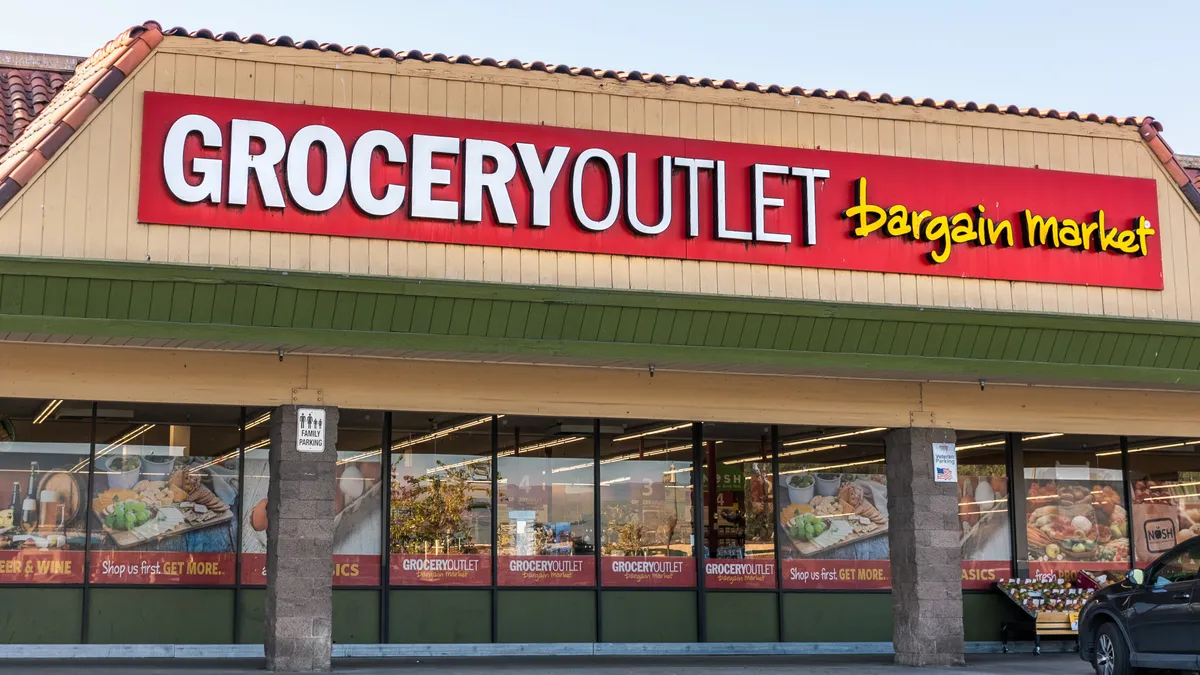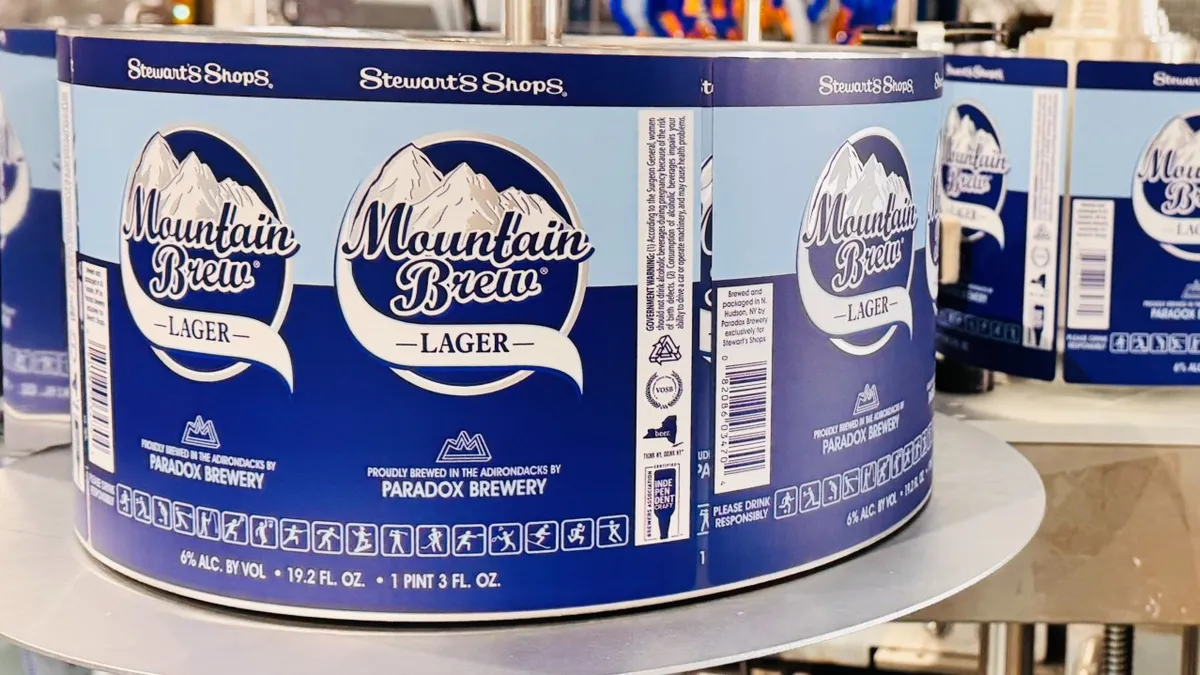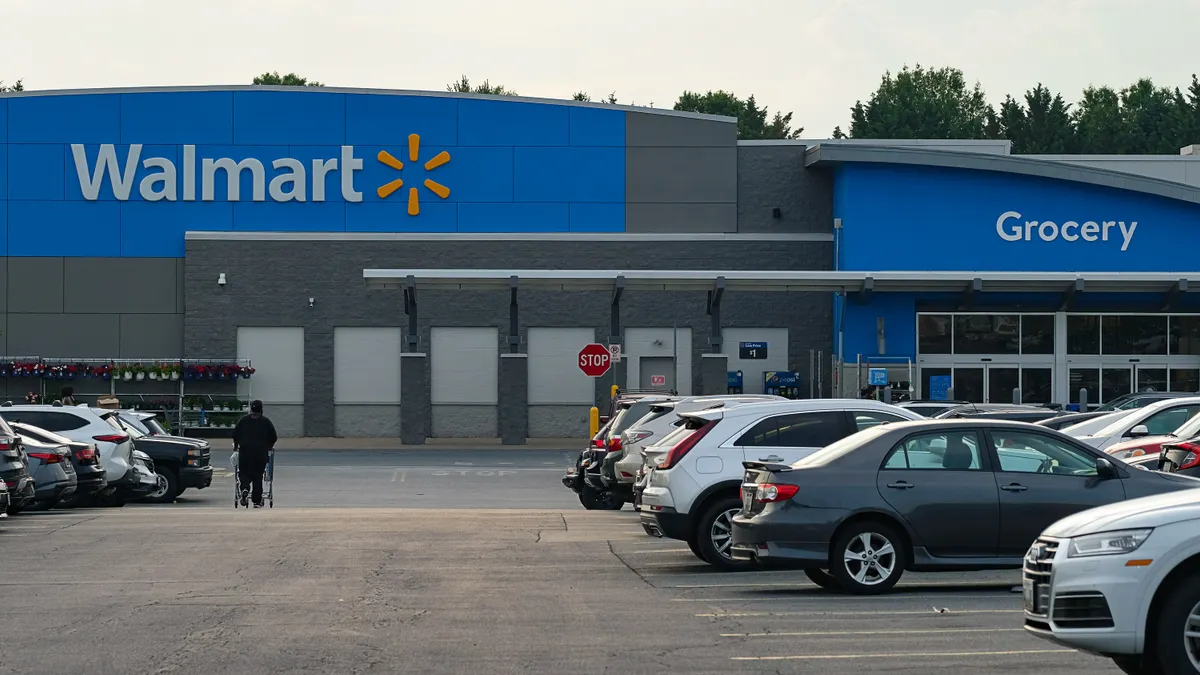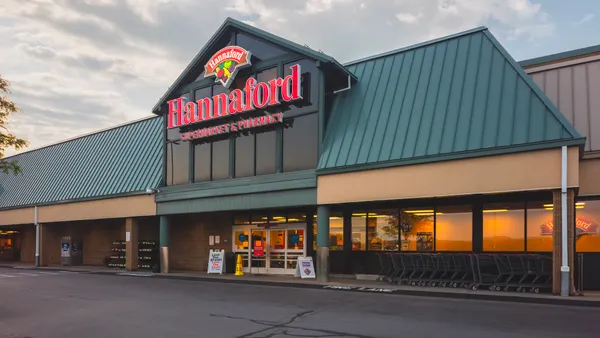Grocery Outlet is known for low prices — maybe a little too well known.
The company’s stores are filled with a wide assortment of low-price items and signage touting all the money shoppers can save. The exteriors of its stores are emblazoned with the phrase “Grocery Outlet Bargain Market.”
But sometimes that reputation can have its drawbacks, according to the discounter’s top marketing executive.
“It’s not always a blessing to have ‘bargain’ and ‘outlet’ in a grocery store name,” Layla Kasha, Grocery Outlet’s chief marketing officer, said in an interview. “Some people are like, ‘I don’t know what’s going to be in there.’ To get them to even try shopping at Grocery Outlet is a hurdle.”
Even as many consumers are focused on keeping their grocery bills down, quality and assortment are still top of mind, and Grocery Outlet is looking to leverage its private label, unique assortment and fresh offerings as it markets the value of its treasure hunt experience.

Kasha, who has spent nearly a decade at the discounter in top marketing roles, said she remembers seeing the rise of portfolio shopping — visiting multiple retailers in search of low prices and deals — during the 2008 recession. The COVID-19 pandemic served as another catalyst for people to shop multiple retailers in search of deals, she said. That cross-shopping has further propelled shopper interest in discounters, like Grocery Outlet.
Kasha’s “zigzaggy road” to Grocery Outlet started with working for her father, who owned a bodega-style store along with a few restaurants, she said. She went on to work in sales and marketing positions at Stone Creamery and Arby’s.
“I grew up in the restaurant business. … I did kind of everything in the restaurant you could imagine: I worked in the kitchen, I worked in the front, I managed. I did all that, and then when I owned my own restaurant, I started marketing [to bring in customers],” she said.
Kasha landed at Grocery Outlet in 2017 after a friend connected her to an open marketing role at the discounter.
Kasha spoke with Grocery Dive about how consumer trends have shifted recently, how the discounter approaches marketing to new and existing consumers and what role the discounter’s nascent private label plays in its strategy to entice shoppers.
Editor’s note: This interview has been edited for length and clarity.
GROCERY DIVE: Recently, there seems to be a shift with consumers moving away from traditional grocers to buy groceries from two ends of the spectrum: low-price retailers and specialty grocers. Are you seeing a similar pattern? What changes in consumer habits is Grocery Outlet noticing?
LAYLA KASHA: We are absolutely seeing that. COVID-19 changed shopping behaviors radically. Like every recession, everything in the environment tweaks people’s shopping a little bit.
So a lot of people changed their shopping habits during the recession, and then once you get through the recession, you're still like, “I'm still not going to pay full price for something I know I can get if I just make one more stop, right?”
It’s a really interesting time to be an extreme retailer and a marketer. What we're seeing in the store is a lot of different customers. We have to be able to serve somebody that shops us twice a week, and serve somebody that shops us once a week, and serve somebody that shops us once a month. There’s those folks that stock up on a budget and then there’s people going in to see what's in there.

Grocery Outlet’s reputation is built around low prices and the treasure hunt. Can you speak to how the discounter approaches marketing to its customers?
We’re not the chore. We are the fun shop that people get to do and want to do. So we lean into the fun. The item you don’t expect you’re gonna find, the organic, the high-end brands — we’re super proud of that.
You might find OPI nail polish. It’s my favorite find: OPI nail polish for $1.99. I think for us, we really focus on “What are you going to find?”
I’ve heard Grocery Outlet executives on earnings calls talk about the “treasure hunt experience.” How much of that treasure hunt experience are you pointing people to versus letting them discover those deals on their own?
A lot of that is organic. Once you find the one thing that you’re like, “I did not know I could get this for that price,” then in your brain it triggers the thought, “I wonder, what else is in here?” Then you go up and down every aisle. When you get a couple really good deals in your cart, you’re sold. That is the magic.
I had a friend of mine that would say to me — and this is not somebody that needed a bargain — “I can never drive past one of your stores, because it haunts me to know: What did I drive past? What’s in there that I missed this week?” She would hit all three Modesto, California, stores weekly, because she was like, “I just know there’s something in there.”
The treasure finds tend to happen a lot in the wine department, the beauty aisle and the natural, organic, specialty and healthy department. When you find an item you didn’t expect to see, it creates a tremendous amount of excitement.
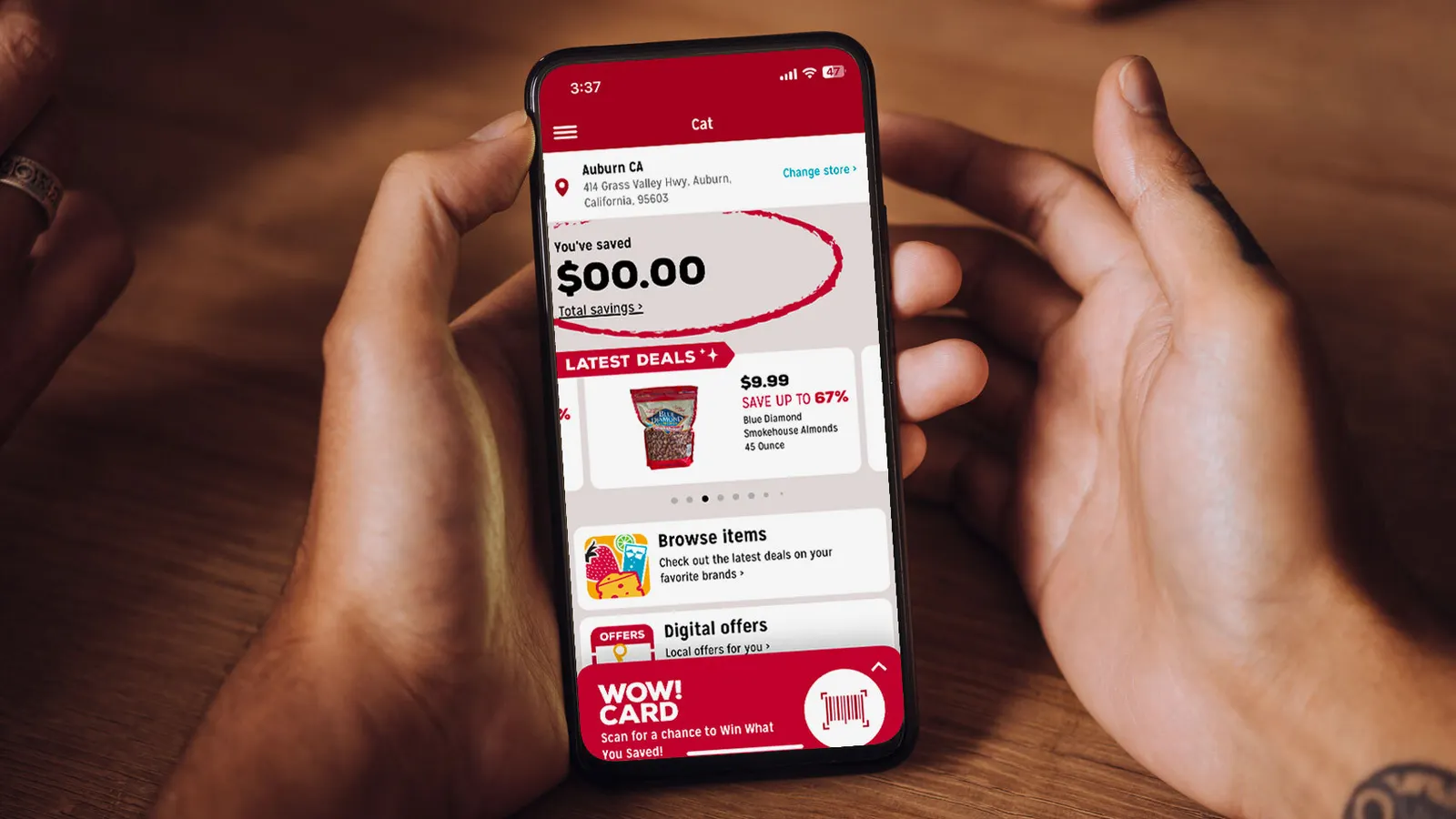
What is the company’s messaging for people who might not be familiar with Grocery Outlet?
It’s definitely more challenging in new markets. We are part of the community, so every store is locally owned and operated. The person that’s going to own that store and be in that store lives there, so they know their communities. We do a tremendous amount of marketing, billboards, TV, radio, but one of the ways we do it, too, is we tap into local influencers and really use the digital space to get an organic shop.
The key is getting more people organically talking about the store: “I went to the store. This is my haul. Oh my gosh. The store was gorgeous. The people were friendly. The produce was really fresh.”
People get really excited about things like fresh salmon, because they don’t expect it. They don’t expect to see organic produce. A lot of times, people put it on their page, and we didn’t even ask them to go in. What we’ll often do is called user-generated content, so we’ll send them a note and say, “Hey, can we share this?” And people are thrilled to have that happen.
What marketing opportunities are you currently excited about?
I would say the really exciting thing right now is really digging back into the customer themselves. We’re going through that work. COVID, inflation, everything’s changed. What are [consumers] doing now? And how are we going to stay relevant?
We’re really playing with this idea of … crafting the message to specifically speak to each person. What we say and how we say it might change depending on who I’m talking to. A Gen Xer is going to hear something a certain way, where a millennial or a Gen Zer is going to hear it in a different way. What’s always fun is to craft messages and do A/B testing to see what's landing.
How do you factor private label into marketing? What has the reception been like to the private label?
It’s early days. We’ve got a few hundred SKUs. It’s going really well. Second Cheapest Wine is a really big hit. It’s a clever name, and people really are like, “I gotta try it.”
We have other categories: deli, baking, sugar, all that kind of stuff. We’ve got some staples coming through. We’ve got butter, sugar, mustard, cheese, wine, ketchup and condiments. There’s a lot of SKUs in the deli area. We’re going to launch more SKUs this year.
Something we heard from customers was, “Man, I love shopping there, but it’s really hard when I get there and I need butter, and you guys don’t have it,” because we source opportunistically.
The operators can order whatever they want and feel the community needs, but private label tends to be pretty much in all the stores. We’re being strategic about what we’re putting out. We’re not putting out SKUs just to put out SKUs. We’re putting out thoughtful SKUs that our customers are looking for, that is going to be a value add for them.



